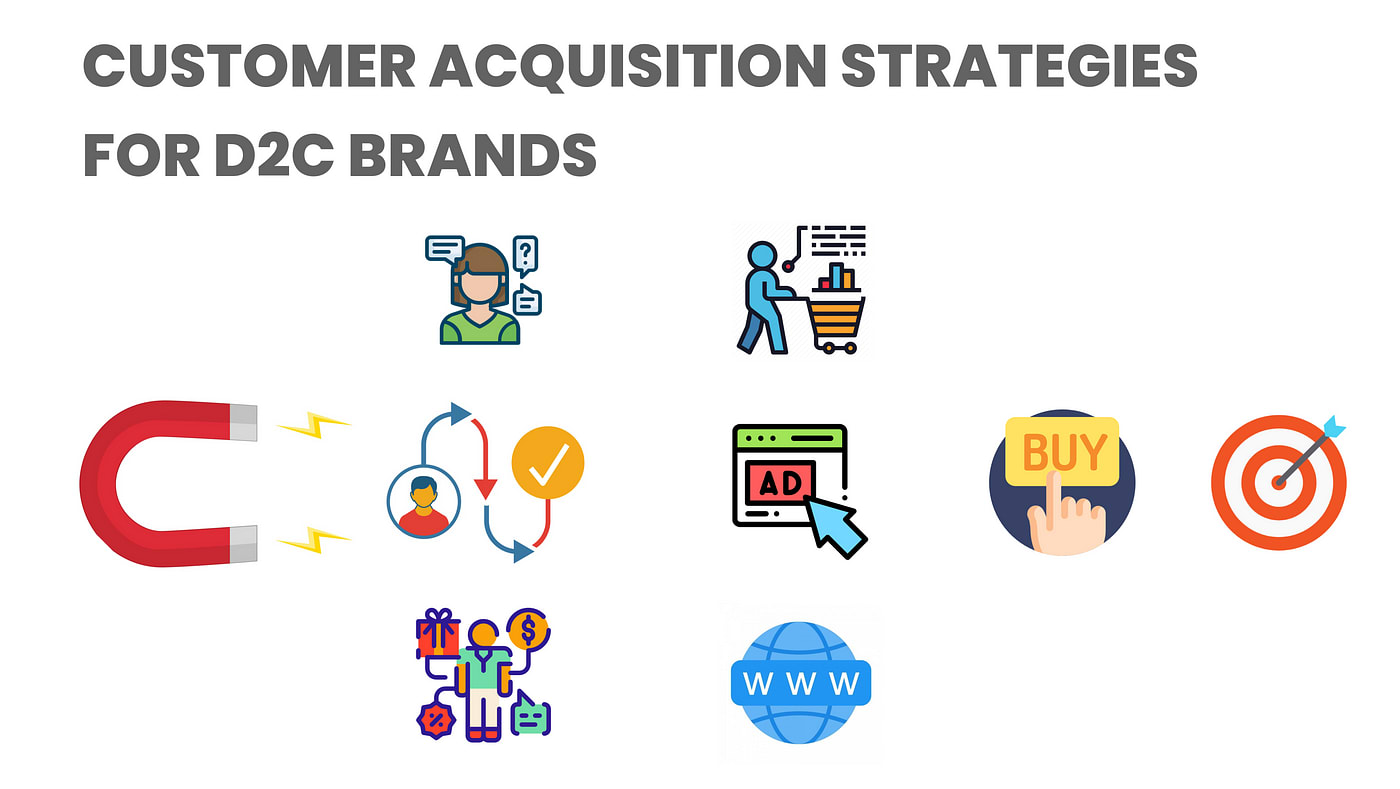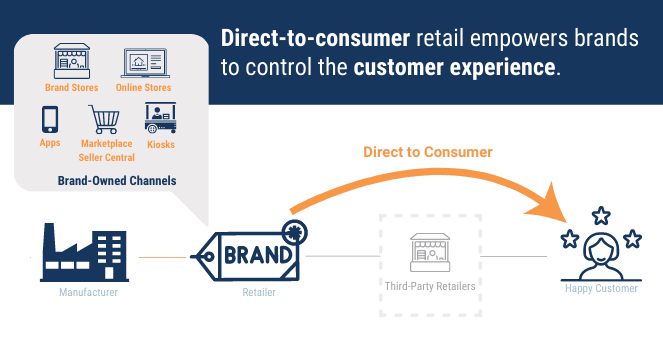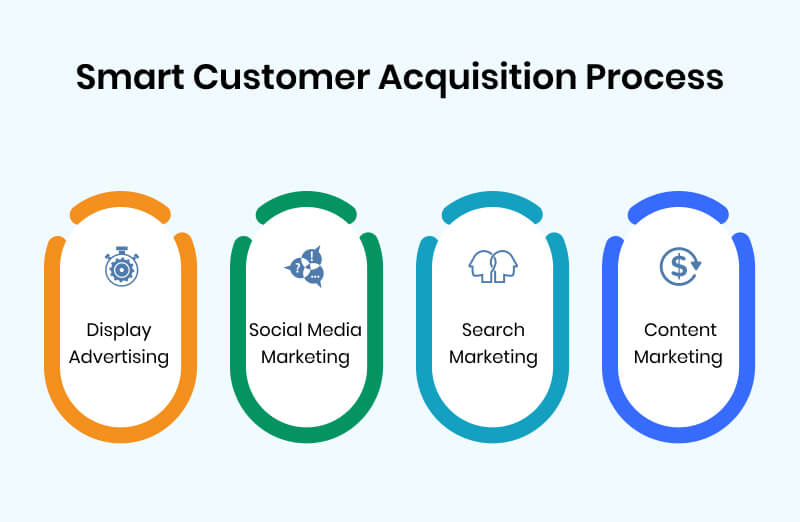Winning at Customer Acquisition for Your D2C Brand

Table of Contents
- Introduction
- Acquiring D2C Brands and Best Local Brands
- Partnership and Collaboration
- Influencer Marketing
- Targeted Digital Advertising
- Understanding Direct-to-Consumer (D2C) Strategy
- Brand Control
- Customer Data and Insights
- Seamless Customer Journey
- Pillars of Customer Acquisition
- Targeted Marketing
- Customer Experience
- Analytics and Optimization
- Benefits of D2C for Consumers
- Direct Engagement
- Competitive Pricing
- Personalized Experience
- The Three Parts of the Customer Acquisition Cycle
- Awareness
- Acquisition
- Retention
- Conclusion
- FAQs (Frequently Asked Questions)
Introduction
In the highly competitive world of business, customer acquisition plays a crucial role in the success of direct-to-consumer (D2C) brands. This article delves into the strategies, pillars, and benefits of customer acquisition for D2C brands, shedding light on effective techniques to drive growth and establish a strong customer base.
Acquiring D2C Brands and Best Local Brands
Partnership and Collaboration
One effective strategy for acquiring D2C brands and the best local brands is through partnerships and collaborations. By forging strategic alliances, brands can leverage each other's strengths and expand their market reach. Collaborating on joint marketing campaigns and cross-promotions can amplify brand exposure and attract new customers.
Influencer Marketing
Influencer marketing has become a powerful tool for customer acquisition. By identifying and engaging relevant influencers with a strong following, D2C brands can tap into their influence and reach. Collaborating with influencers through endorsements, sponsored content, and brand partnerships can effectively attract new customers and drive conversions.
Targeted Digital Advertising
Utilizing targeted digital advertising campaigns across various channels is another essential strategy for acquiring D2C brands. By leveraging data-driven insights, brands can customize their advertisements based on demographics, interests, and behaviours. This approach ensures that the right message reaches the right audience at the right time, maximizing the chances of customer acquisition.
Understanding Direct-to-Consumer (D2C) Strategy
To excel in customer acquisition, it is crucial to understand the key elements of a direct-to-consumer (D2C) strategy.

Brand Control
One of the primary advantages of the D2C model is the full control that brands have over their brand image, messaging, and customer experience. With no intermediaries involved, D2C brands can establish a strong brand identity, build customer trust, and consistently deliver a cohesive brand experience.
Customer Data and Insights
Direct access to valuable customer data is a significant benefit of the D2C approach. By leveraging customer data, D2C brands gain deep insights into customer behaviour, preferences, and purchasing patterns. This data can be used to personalize marketing efforts, improve product offerings, and enhance the overall customer experience.
Seamless Customer Journey
D2C brands have the advantage of creating a seamless customer journey by eliminating intermediaries. From the moment of discovery to the purchase and post-sales support, D2C brands can optimize every touchpoint to provide a frictionless experience. This streamlined process enhances customer satisfaction and fosters long-term loyalty.
Pillars of Customer Acquisition
Successful customer acquisition for D2C brands rely on three essential pillars: targeted marketing, customer experience, and analytics and optimization.
Targeted Marketing
Targeted marketing begins with a deep understanding of the target audience. Through comprehensive market research, D2C brands can define their ideal customers and tailor marketing campaigns and messaging to resonate with their needs and preferences. This personalized approach increases the chances of customer acquisition.
Customer Experience
Exceptional customer experience is a cornerstone of customer acquisition. D2C brands should strive to provide personalized interactions, seamless purchasing processes, and reliable post-sales support. By prioritizing customer satisfaction, brands can cultivate loyalty and advocacy, leading to increased customer acquisition.
Analytics and Optimization
Data-driven decision-making is crucial in customer acquisition. D2C brands should employ robust analytics tools to track and analyze customer acquisition metrics. By gaining insights into the effectiveness of marketing strategies, brands can optimize their approaches to maximize conversion rates, return on investment, and overall customer acquisition success.
Benefits of D2C for Consumers
D2C brands offer several benefits to consumers that contribute to customer acquisition.
Direct Engagement
Direct engagement with D2C brands allows consumers to interact directly with the brand, fostering a sense of connection and trust. By eliminating intermediaries, D2C brands can establish a direct line of communication with their customers, actively listening to their feedback, addressing concerns, and building strong relationships. This personalized interaction creates a sense of authenticity and transparency, which resonates with consumers and increases the likelihood of customer acquisition.
Competitive Pricing
One of the significant advantages of D2C brands is their ability to offer competitive pricing. By cutting out intermediaries and selling directly to consumers, D2C brands can bypass additional costs associated with traditional retail channels. This cost-saving is often passed on to the consumers, resulting in more affordable products without compromising on quality. The competitive pricing offered by D2C brands attracts price-conscious consumers, driving customer acquisition.
Personalized Experience
D2C brands have access to valuable customer data, which enables them to deliver personalized experiences. By leveraging data analytics and insights, D2C brands can understand their customers' preferences, purchase history, and behavior. This information allows brands to tailor their marketing messages, recommend relevant products, and create a personalized shopping experience for each individual consumer. The personalized touch provided by D2C brands enhances customer satisfaction, fosters loyalty, and drives customer acquisition.
The Three Parts of the Customer Acquisition Cycle
Customer acquisition involves three interconnected parts: awareness, acquisition, and retention.

Awareness
Creating brand awareness is the initial step in the customer acquisition cycle. D2C brands employ various strategies such as content marketing, social media campaigns, influencer partnerships, and search engine optimization to increase their visibility and reach a wider audience. By effectively spreading awareness about their brand, products, and value proposition, D2C brands can generate interest and attract potential customers.
Acquisition
Once awareness is established, the focus shifts to converting prospects into customers. D2C brands employ conversion strategies such as compelling product descriptions, enticing offers, seamless checkout processes, and personalized recommendations to drive conversions. By optimizing their website or online store for a smooth and intuitive user experience, D2C brands can streamline the path to purchase, making it easier for customers to convert.
Retention
Customer retention is a crucial aspect of customer acquisition. D2C brands aim to cultivate loyalty and encourage repeat business from their existing customer base. They achieve this through various retention strategies such as personalized communication, loyalty programs, exclusive offers, and exceptional customer service. By nurturing relationships with their customers, D2C brands increase the lifetime value of each customer, driving long-term success and sustainable growth.
Conclusion
Customer acquisition is a vital component of success for D2C brands. By implementing effective strategies, focusing on pillars like targeted marketing, exceptional customer experience, and data-driven optimization, D2C brands can acquire and retain customers more efficiently. The benefits of D2C for consumers, including direct engagement, competitive pricing, and personalized experiences, further contribute to customer acquisition. As D2C continues to reshape the retail landscape, embracing customer acquisition strategies will be key to unlocking success for D2C brands.
FAQs (Frequently Asked Questions)
Lunch Your Online Store with StoreBud
Ready to kickstart your D2C journey? Look no further than StoreBud, the leading software-as-a-service (SaaS) platform that empowers online sellers to launch their online stores in just two minutes. With StoreBud, you can create a fully functional e-commerce website with integrated payments, shipping solutions, search engine optimization, and analytics—all without the need for any technical assistance or coding knowledge.
Experience the convenience and efficiency of StoreBud's no-code platform, designed to streamline the process of setting up and managing your online store. Sign up today and unlock the potential of your D2C brand. Launch your online store with StoreBud and join the thriving community of successful D2C brands.
Remember, in the world of D2C, effective customer acquisition is the key to winning the market. Start your journey with StoreBud and watch your brand soar to new heights. Sign up now and launch your online store in just two minutes!
Q:
A: Data is invaluable for D2C brands as it provides insights into customer behavior, preferences, and trends. This data enables personalized marketing, targeted campaigns, and optimization for better customer acquisition results.
Q
A: While D2C brands have gained popularity across various industries, they may not be suitable for all types of products. D2C models typically work well for products that can be easily shipped, have a strong brand identity, and offer a unique value proposition. However, industries such as heavy machinery or specialized equipment may still rely on traditional distribution channels. It's important for businesses to evaluate their product, target audience, and overall market dynamics before deciding if a D2C approach is the right fit for their specific offering.
Q:
A: To ensure a seamless customer journey, D2C brands should focus on optimizing every touchpoint. This includes having a user-friendly website or online store, providing transparent product information, offering convenient and secure payment options, and delivering products in a timely manner. Regularly gathering customer feedback and addressing any pain points or concerns is also essential in providing a smooth and satisfactory experience.
Q:
A: Key metrics for customer acquisition include customer acquisition cost (CAC), conversion rate, customer lifetime value (CLV), return on ad spend (ROAS), and customer retention rate. These metrics help assess the effectiveness of marketing efforts, identify areas for improvement, and measure the overall success of customer acquisition strategies.